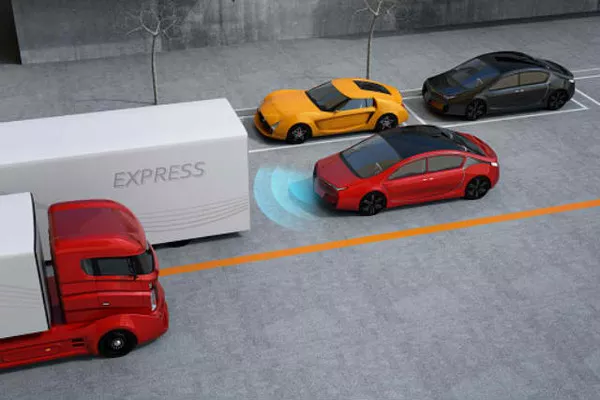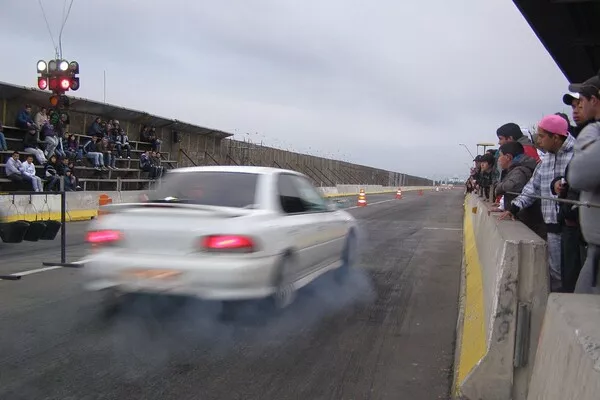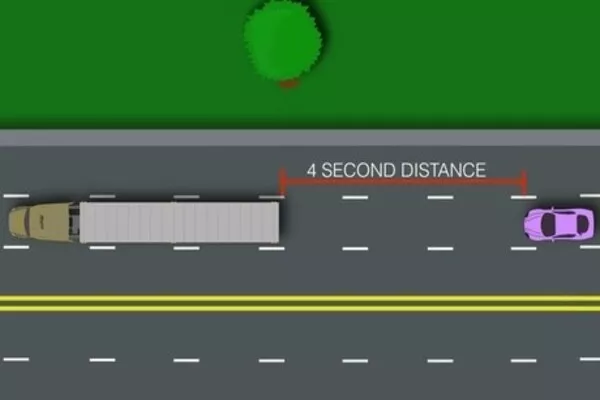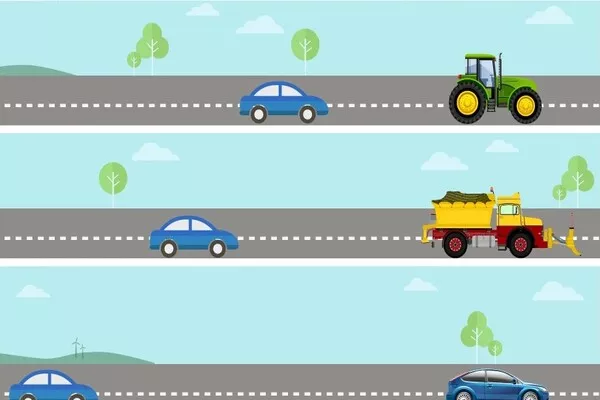Rear-end collisions are among the most common types of car accidents. These usually involve cars driving inappropriately close to the vehicle ahead of them. Understandably, a large number of road users despise vehicles driving too close to them.

It is important to understand the stopping distance when driving a car
The truth, however, is not all tailgating accidents are the result of aggressive drivers or those who stay too close to the leading car. Most rear-end accidents are caused by the poor understanding of the total time it will take for a vehicle to come to a complete stop as well as what the right following distance is. These two are the leading causes of why otherwise responsible drivers get involved in rear-enders.
Philkotse.com values your safety, that is why we will explain what stopping distance is and why it is vital in terms of safety.
1. What is stopping distance?
Before we discuss the appropriate following distance in different driving scenarios, you should first understand the stopping distances and capabilities for an average vehicle.
Today, we have lots of active safety features such as electronic stability control and anti-lock braking. These features can make unrealistic expectations of how cars can adequately react to hard braking. A driver of a modern car might think that with a good set of tires, his car is perfectly capable of swiftly coming to a stop in case emergency braking is needed.

Today, we have lots of active safety features such as electronic stability control systems
In reality, those advanced braking systems optimize the brake efficiency. However, the primary job is to ensure that the driver maintains control of their car even when forced to brake hard.
Additionally, car braking is just one of the components of stopping distance. The key to determining how far a car travels before it comes to a full stop is the time the driver notices and responds to the need to brake.
>>> Have you known how to use your car brakes properly?

Advanced braking systems optimize brake efficiency while braking
The table below illustrates the typical stopping distance for an average family vehicle.
|
Speed
|
Reaction distance
|
Braking distance
|
Total stopping distance
|
|
40 km/h
|
17m
|
9m
|
26m
|
|
50 km/h
|
21m
|
14m
|
35m
|
|
60 km/h
|
25m
|
20m
|
45m
|
|
70 km/h
|
29m
|
27m
|
56m
|
|
80 km/h
|
33m
|
36m
|
69m
|
|
90 km/h
|
38m
|
45m
|
83m
|
|
100 km/h
|
42m
|
56m
|
98m
|
|
110 km/h
|
46m
|
67m
|
113m
|
The information in the table shows that the stopping distance of vehicles running at low speeds is also substantial. If the car is traveling at a rate of 40 kilometers per hour, more than a quarter of a rugby field will be covered before it comes to a complete stop.
If the car is traveling at a speed of 100 kilometers per hour, the car will cover a full rugby field before it comes to a halt.

The car traveling at a rate of 40 kilometers per hour will cover more than a quarter of a rugby field before it comes to a complete stop
Take note that the above table is on a dry road with a car equipped with a good set of tires. Stopping distance on wet roads increases even further. Refer to the table below:
|
Speed
|
Reaction distance
|
Braking distance
|
Total stopping distance
|
|
40 km/h
|
17m
|
13m
|
30m
|
|
50 km/h
|
21m
|
20m
|
41m
|
|
60 km/h
|
25m
|
29m
|
54m
|
|
70 km/h
|
29m
|
40m
|
69m
|
|
80 km/h
|
33m
|
52m
|
85m
|
|
90 km/h
|
38m
|
65m
|
103m
|
|
100 km/h
|
42m
|
80m
|
122m
|
|
110 km/h
|
46m
|
97m
|
143m
|
If a car is traveling on a slippery road at a speed of 60 kilometers per hour, it will cover the distance of half a rugby field before it comes to a halt.
2. Factors affecting stopping distance
A four-second following distance should be enough to avoid a rear-end collision in most cases. However, several factors affect stopping distance.
Factors that increase driver reaction time:
- Level of inebriation or fatigue
- Level of attention
- Visibility issues (such as heavy fog, driving without prescription contact lenses or spectacles when required to wear so)
- Level of driver’s experience and ability to easily identify road hazards and respond to them accordingly

A four-second following distance should be enough to avoid a rear-end collision in most cases
The following factors affect the distance needed for a car to come to a halt when brakes are already applied.
- Brake type and conditions
- Tire condition including tire pressure and tread depth
- Towing another vehicle or another car
- Total weight of the car
>>> Read more:
- Disc Brakes vs Drum Brakes: How are they different?
- 10 kinds of tire wear can indicate a car’s general condition
Several environmental factors aside from weather can also affect the stopping distance. These include the following:
- The surface of the road (gravel, tar or concrete)
- Road gradient, with vehicles needing more time and effort to stop on a downhill gradient
- If braking takes place on a curve or straight roads/highways (with corners having extra complications that can affect the outcome of emergency braking.
The said factors only mean that drivers should err on the side of caution once their focus and attention are compromised in any way. Or, if they have enough reason to doubt the effectiveness of their vehicle's brake system. It is advised to add extra following distance if the weather or road conditions are unfavorable.
3. The importance of keeping safe stopping distance
Understanding stopping distance is crucial for every road user’s safety. Following the four-second rule is a useful guide. It involves choosing a stationary object, then counting in seconds when the vehicle in front of you passes it.
You should be at least two seconds behind in perfect conditions (with good quality tires, well-maintained brakes, and a dry road surface). A greater distance behind a vehicle will be needed if the conditions are not perfect.

Understanding stopping distance is crucial for every road user’s safety
>>> General tips:
- 14 safety tips when you have to drive in heavy rain
- Safety tips: How to drive when your car brakes are malfunctioned
Keeping a safe stopping distance is beneficial to ensure that every road user is safe on the road. With appropriate stopping and following range, rear-end collisions will be prevented. Take note that this type of accident does not only damage your vehicle but can also be fatal and can lead to severe injuries or even death.
The key here is to stay alert to whatever is happening on the road. This can quickly be done by looking well ahead. Always check your surroundings, especially the road and cars in front of you. Keep in mind the appropriate following distance and remember that road and car conditions matter when stopping the car.
Recent posts
- Safety first! Anti-lock Braking Systems - What else you need to know? Dec 04, 2019
- 7 things you might not know about Regenerative Braking Nov 27, 2019
- Safe driving: Everything you need to know about ESP light Aug 16, 2022
- Safe driving: Annoying and dangerous things on the road you might face Aug 16, 2022
- 4 rules that every Filipino driver should know about braking Aug 09, 2022












